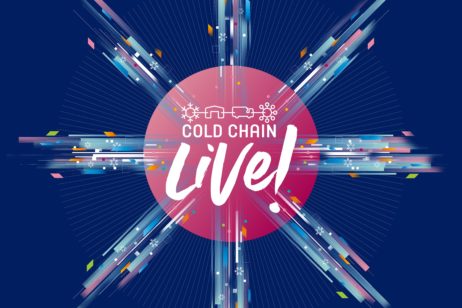
TOWARDS A NET ZERO COLD CHAIN

Prof Toby Peters | Professor in Cold Economy | University of Birmingham
T.Peters@bham.ac.uk
Creating a robust blueprint for sustainable and cost-effective food logistics
October 2020
“Clean energy and sustainable food supplies will be the planet’s most pressing issues over the next 30 years” was the opening line of Martin Rees’ recent article about how Britain must nurture its scientific expertise to help save the world from climate crisis.
Cold-chain sits at this intersection; the question we have to ask is “How do you create the zero emission, local and global, temperature controlled “field to fork” connectivity to feed 10bn people sustainably whilst economically empowering hundreds of millions of small-scale farmers?”
Food security is an integrated global issue. The UK is reliant on imports; 84% of fruits and 47% of vegetables were imported in 2019. In GCC countries, the vast majority of all food is imported. At the other end of the chain, Rwanda has a five-year strategy to double agri-exports by 2024-2025; this includes a nine-fold increase in high-value temperature-controlled horticulture exports.,Global food demand is set to grow by 50% by 2050, driven by people living in developing countries moving to cities and a shift to more western diets. At the same time, global warming is impacting food cycles, deteriorating arable land and reducing water availability. There will be greater demand on food, likely risking availability and price.
Alongside designing resilient and zero-emission systems to provide enough nutritious food to feed 10bn people, we must simultaneously improve the livelihoods of the half a billion small and marginal farmers who must remain the major stakeholders in its future. 80% of Africa’s 51 million farms are smaller than two hectares, yet deliver 70% of the continent’s food. Overall, small and medium sized farms supply more than 50% of the essential nutrients in the global food supply. In terms of their importance to employment, as an indicator, 50% of the workforce in India are directly employed by agriculture, 73% in Rwanda and 40% of the total population in Kenya.
Cold-chains can deliver on all three core pillars for sustainable food: (i) enhance the income, economic wealth and financial security of farmers, growers and fishers; (ii) improve food quality, safety, nutritional content and value to consumers; and (iii) achieve this sustainably with minimum environmental and natural resource impact. We must though create a robust blueprint for sustainable and cost-effective food logistics network. This is where the research being led by the University of Birmingham and Heriot Watt University in Rwanda, Bangladesh and India will prove invaluable in mapping a future course that benefits both farmers across the Global South and consumers globally.
The challenge is that traditional approaches to intervention have been mainly reductionist with piecemeal projectstesting individual cold-chain technologies or interventions (cold storage, supermarket chillercabinets, and transport refrigeration). Cold chains are highly complex, multi-dimensional systems; they are a primary source of different energy demands and have the added complexity of including logistics and transport. Focusing on optimizing the sub systems neglects the interdependencies that can exist amongst the economic, energy resources, technology choices, mitigation and adaptation strategies, social and political systems and results in a sub optimal system of systems.
Any proposed strategy needs to address the significant problem of integrating complex, diverse and variable systems from both a technical and non-technical perspective. We need to bring together (i) world-leading interdisciplinary researchers working across the food cold-chain sector and sustainable energy; (ii) government and global agencies (iii) stakeholder industries; (iv) new technology innovators; and (v) cold-chain customers from farmer to retailer to provide fundamental new knowledge in a whole systems approach to redefine the cold-chain architecture and map the opportunities available to reach net zero emissions by 2050, In so soing, we can deliver (i) demand and climate adaptation; (ii) resilience; and (iii) decarbonisation of the cold-chain through the food industry, from farmer and fishers to consumers simultaneously.
Such integrated transition is however unlikely to emerge organically given the many actors both in thelocal and in global supply chains, this can risk climate targets, energy security and food security as well as risk economic opportunity for our food growers, fishers and producers. Governments and Multi-National agencies need to step up from the sub-system and catalyse the system-level collaboration so as to transform the food system from farm to fork into a resilient and sustainable structure delivering at every level.
Headline Partners
Supported by

